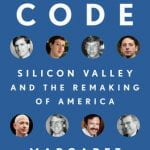




Luna: As the question of man-enacted climate change fosters debates over the practices and cultures that cause it, I try – like many other individuals across academia and society at large – to cope with the pressing reality of climate by hoping for a change in humans. Thus, this month I want to suggest Gillis’ The Human Shore: Seacoasts in History (University of Chicago Press, 2012), because it voices the stories of those humans who lived with changing coasts rather than on dry and bound land, thus recovering a terraqueous perspective that had mostly been silenced by landlocked approaches to the making of history
Although primarily focusing on coastal cultures that developed along a variety of Mediterranean coasts and that later travelled across the globe, John R. Gillis’ account of seaside civilizations spans over 100,000 years, from the separation between hominids and apes until the 21st century. The questioning of traditional historical distinctions, such as the idea that anything before the advent of the ‘agricultural revolution’ is prehistory and that fishing and foraging are less relevant than farming, animal husbandry, and industry, represent the most intriguing aspects of The Human Shore. It shows how in substantiating contemporary understandings of civilizations as being based on terrafirma the assumptions behind these ideas not only have an effect on our sense of history but also on our capacity to imagine the future. Despite the fact that for most historians, “time still begins and ends on land” and geographers “treat water as external to their subject” (18), in fact, research in archeology and neuroscience increasingly confirms an alternative story of human development as beginning at sea, between land and waters, where ecosystems overlap.
By looking at the past from this different perspective, The Human Shore recovers ways in which humans have been able to adapt to the conditions of the unstable shore, thus pointing to the possibility to acknowledge and respect the nature of places that remain in-between, without the human enforcement of an unsustainable division between land and water. Such a vision, that advocates for an understanding of land and water as “an ecological continuum” (198), perhaps allows for a way of rethinking the past that fosters more realistic attitudes towards climate-change related issues such as sea level rise, increased storm activities, and flooding.

Pranav: This month, I recommend reading Christopher Duggan’s Fascist Voices: An Intimate History of Mussolini’s Italy. A work of outstanding insight and lucidity, Duggan’s in-depth study of what led millions of Italian men and women to support Mussolini and his fascist ideas is a remarkable achievement. Through extensive archival work, Duggan recovered the most intimate thoughts of Roman intellectuals, Sicilian school-teachers, Florentine veterans, and many others who, disillusioned by the outcome of the First World War and the many problems plaguing Italy, turned to Mussolini’s promise to achieve the national greatness envisioned by leaders of the Risorgimento in the nineteenth-century. The result is an incredibly rich but deeply disturbing study of violence, charisma, apathy, and the strange mingling of religious and political ideas.
Duggan provides a coherent narrative of Italy’s trajectory from the end of the first world war to the fall of the Fascist regime. This is accompanied by a number of outstanding chapters that discuss various themes including Italians’ view of Mussolini as a man of providence, the Fascist attempts to “purify” the soul of Italy, the Catholic Church’s very complex relationship with the fascist regime, anxieties concerning Italy’s relationship with Nazi Germany, and the attempt to acquire an Italian empire that could someday rival those of the French and the British. The extensive discussion of sexual politics, especially Italian women’s endless fascination with Mussolini’s supposed sexual prowess, is one of the intriguing parts of the book. Duggan ends on a profoundly unsettling note by listing various recent entries in the visitor registers from Mussolini’s mausoleum which has become a site of pilgrimage for neo-fascists and tourists alike. One of the entries reads:
“Ciao Benito, I have returned…I am here to cry out against these thieves who are killing our Italy…If, and by what means, we can get out of this CHAOS, I don’t know…I can only say that once again it was your idea that was best, and I so much hope that we can return if not exactly to how it was before at least to something approaching it…We need a great LEADER, honest and effective. TO US, DUCE!”

Simon: For an industry that persists in insisting that it always looks to the future without being bound to the conventions of the past, Silicon Valley has a history that can make for fascinating reading, especially in the hands of historian Margaret O’Mara in her new book The Code: Silicon Valley and the Remaking of America (Penguin, 2019). It is precisely that disjuncture between the pioneering self-image of the tech sector in the late twentieth century and its deep imbrication in a history of federal education and defense spending that makes this such a valuable account for thinking about the relation between visions of a techno-optimistic future and the political economy that sustains it in the present.
O’Mara argues, for instance, that it was precisely the distance from established financial centers on the east coast that helped foster the creativity that ultimately transformed the Santa Clara Valley of the San Francisco Bay Area into “Silicon Valley.” Around the same time, in the middle of the century, early prophets of the technological future like Vannevar Bush imagined new inventions that could effectively eliminate such long distances through an ideal information-sharing system, in his case called the “Memex” and four decades later called the Internet. The most recognizable captains of the contemporary tech industry — Mark Zuckerberg, Bill Gates, Steve Jobs — embrace an image as disruptive auto-didacts who dropped out of universities that could only do so much to help them realize their visions. As O’Mara shows, however, it was enterprising universities like Stanford in the early twentieth century and the mass provision of public higher education in California decades later that supplied the skilled workers that built ventures like theirs. It’s easy to see in this history of SIlicon Valley’s ideas about itself a recurring irony, that it can’t quite account for its own origins. Rather than dwell on those contradictions, though, O’Mara shows how advocacy for conflicting economic policies have long divided the sector and have corresponded to at times divergent aspirations to a managed, technocratic future or a libertarian open frontier. As the national political support for Silicon Valley’s most prominent representatives crumbles, it will be interesting to track how those visions converge or shift.

Nuala: !Climate Crisis and Undergraduates! If one is looking for an undergraduate-accessible, written-for-the-public book with an enormous impact and which continues to be relevant today, I would highly recommend teaching Rachel Carson’s Silent Spring (Houghton Mifflin, 1962). Carson, a zoologist by training and nature writer for the Bureau of Fisheries was an improbable revolutionary yet she challenged public complacency, industrial empires, government irresponsibility, and exposed a scientific establishment that cherished and nurtured its elitism. Carson’s deftly crafted book— to articulate her alarm for both humankind’s hubris and nature’s integrity because of the unintended effects of pesticides— aimed to wake people up from their industry-marketed slumber to activate environmental consciousness and change. Her critique of post-World War II American culture presents two overlapping questions: Are humans making a new nature? And who gets to decide what knowledge claims matter? In doing so she renewed the political power of homemakers, especially housewives.
Carson’s narrative is carefully constructed with her language and syntax–derived from an epistemology rich in spiritual, moral, and at times mystical tones–quickly captivated the public. Her opening chapter presents a vividly imagined future of bucolic landscapes, deliberately unidentified so its appeal was universal, of harmony and equality. From this cozy, homely, white, middle-class setting, she begins to ravel the ecological world around the reader. Pesticides move up and down the biological food chain into the fabric of your own cells causing microscopic changes that have lasting impact generation after generation. Carson does not “dumb down” the science but translates it for the non-expert. By not shying away from the science she inadvertently owns her own authority to engage with the public as a scientific expert. Using radiation as an analogy in this post-atomic period, she explains how pesticides do not discriminate– they enter your body’s cells regardless of gender, race, class, and socioeconomic status. She pulls the reader into the natural world that is at once familiar and intimate–even as she describes the secret world of chemical functions and molecular change—but soon it becomes foreign, grotesque, and ephemeral. Silent Spring was an overnight sensation, however, Carson, an intensely private and reserved person, was seen to be threatening the American ethos of controlling nature through technological progress. For some opponents, Carson needed to “disappear”.
In tracing the diverse paths the reception of this book took as it permeated the culture of its time, students will gain an insight into such topics as: gender and class, authority and credibility, “fake news”, expertise and the public interest, urbanization and agribusiness, and science and capitalism. As the media in the summer of 1962 erupted in editorial opinions and cartoons critics coalesced into two broad groups: the USDA and their powerful corporate constituents, who viewed it as an expensive public relations issue, and the scientific community who felt it was an attack on their core value of professional integrity. Carson’s views were completely at variance with the government reports on DDT (Dieldrin, Aldrin, and Endrin), thus, creating an uncertainty over whether the book—and its author—should be considered scientific at all. Two threads were created as a means to destroy her credibility, professional status and gender.
Carson’s absence of a Ph.D. (she only has a Masters of Science) or academic affiliation enabled her opponents to leaned heavily on rhetoric that marginalized or denied her scientific status. Her lack of professional status soon gave way to a gendered rhetoric as an attempt to distance her as an authority figure from the category of “science”. On the one hand for detractors, Silent Spring merely mirrored Carson’s personality: a one-sided story by an emotional, hysterical, communist spinster (in their eyes why was she so worried about genetics). Her feminine instability could not and would not threaten the self-evidence notion that science was objective, rational and implicitly masculinity of scientific advance. On the other hand, her supporters wielded her gender for the purpose of constructing an image of her as a scientific authority because not only was she an outsider to academia, but she was a plainly-dressed, petite, and demure woman. The construction of Carson’s personality and physical appearance as inseparable from her environmental ideas created a public storm over who was seen as a relevant scientific authority.
In thinking about the challenges today of climate change and the accelerating demand for collective social responsibility, Silent Spring offers a broader analysis of the role of scientists and experts as public intellectuals and decision-makers. Carson highlighted how there was a major issue in leaving risk assessment to experts and officials and wished to democratize science policy decision-making. She revealed Americans’ views on what constituted the authority, boundaries, limitations, and nature of science—as well as who they would trust to embody it, when, and under what conditions. This larger narrative reveals much about the assumptions, ideals, anxieties, and hopes projected onto everyday American’s, thus, are useful for undergraduate seminars precisely because of their constructed and somewhat artificial nature. This book is useful for introductory courses as well as advanced classes as an entry point into the beginnings of a particular form of environmental activism, alongside revealing the challenge Carson “threw on the table” to a white, middle-class vision of the natural environment.




Leave a Reply